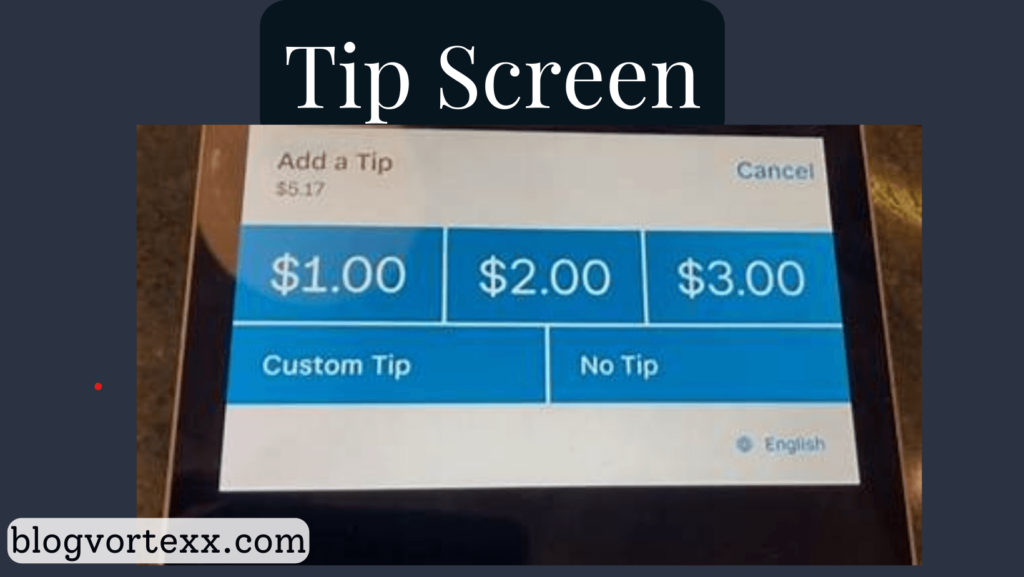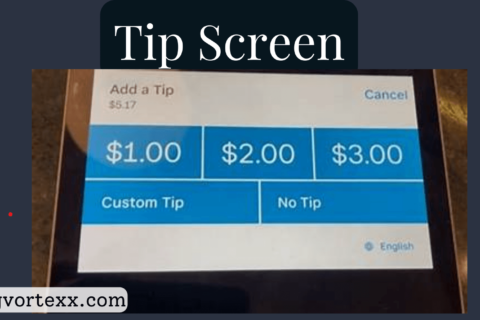Introduction to Tip Screen
A Tip Screen is an interactive feature within an application that provides users with timely, context-specific tips or instructions, helping them better understand the app’s functionalities. By guiding users through unfamiliar features or processes, Tip Screens help optimize their app experience. Whether it’s a first-time user or someone exploring advanced settings, the Tip Screen is designed to offer personalized, relevant advice to enhance usability.
The Purpose of a Tip Screen
The primary goal of a Tip Screen is to improve user experience by offering step-by-step guidance. It prevents users from becoming overwhelmed, frustrated, or confused by unfamiliar features. By giving clear, concise instructions at key moments, a Tip Screen helps users feel more confident and increases the likelihood that they will engage with more complex or hidden app functionalities.
How Does a Tip Screen Work?
The Tip Screen operates by detecting user behavior and then providing helpful suggestions based on that behavior. It can be implemented in various ways, including pop-up hints, overlays, or tooltips. These tips are triggered by specific actions, such as navigating to a new feature or attempting to perform a particular function for the first time. Here’s how it typically works:
- Contextual Awareness: The app tracks user behavior and recognizes when guidance is needed based on the actions they take. For example, if a user opens a feature for the first time, a Tip Screen might pop up to explain how to use it.
- User-Specific Tips: The guidance offered by the Tip Screen is often personalized. For example, returning users might see tips tailored to their past behaviors, while new users receive more basic instructions.
- Real-Time Assistance: Tips are presented in real-time, providing immediate value and preventing users from making errors or struggling to figure out how something works.
- Customizability: Developers can customize Tip Screens based on app complexity and user needs. This ensures that users only see the most relevant tips without feeling overwhelmed by excessive guidance.
Benefits of Implementing a Tip Screen
Implementing a Tip Screen can significantly enhance the user experience, leading to higher user engagement and improved retention rates. Here are some key benefits:
Reducing the Learning Curve
For new users, learning a new app can sometimes be a daunting task, particularly if the app has a range of advanced features. The Tip Screen simplifies this process by offering step-by-step guidance. This reduces the learning curve, allowing users to quickly familiarize themselves with the app and its functionalities.
Enhancing Feature Discovery
Many users may only explore a limited number of features within an app, often missing out on powerful tools or functionalities that could enhance their experience. By offering tips that highlight lesser-known features, the Tip Screen ensures that users make the most of the app’s offerings, leading to a deeper engagement.
Customizable User Experience
The Tip Screen is fully customizable, allowing developers to tailor tips based on user behavior. For instance, new users can receive basic tips, while more experienced users are provided with advanced tips that help them make the most of the app. This ensures that users are not bombarded with irrelevant information, making the guidance more effective.
Improving User Retention
When users understand how to navigate an app effectively and can take full advantage of its features, they are more likely to stay engaged over time. By reducing frustration and improving ease of use, the Tip Screen can play a crucial role in improving user retention and satisfaction.
Increasing User Satisfaction
A well-implemented Tip Screen provides real-time assistance, helping users feel supported as they interact with the app. This can significantly increase overall satisfaction by preventing confusion and making the app experience smoother and more intuitive.
Types of Tip Screens
The Tip Screen can take various forms depending on the needs of the application. Understanding the different types of Tip Screens can help developers decide which approach is best for their app. Here are the most common formats:
Onboarding Tip Screens
It is the process of guiding new users through an app’s key features and functions. Onboarding Tip Screens are typically used when a user first installs an app. These tips introduce essential features, helping users get started smoothly without feeling overwhelmed. They usually appear in a sequence and disappear once the user has completed the onboarding process.
Contextual Tooltips
Contextual tooltips appear when a user interacts with a specific feature or section of the app for the first time. These tooltips offer brief, concise information that explains how to use that particular feature. Tooltips are especially useful for apps with complex or multifunctional interfaces, as they provide real-time, actionable guidance.
Pop-Up Tutorials
Pop-up tutorials are more in-depth than tooltips and are usually triggered by specific user actions. These tutorials guide the user through multiple steps or demonstrate how to complete a task. Pop-up tutorials are ideal for apps with complicated workflows that require more detailed explanations.
Progressive Disclosure Tips
Some apps use progressive disclosure to gradually introduce new features to the user over time. Instead of overwhelming users with all features at once, the Tip Screen reveals new tips based on the user’s progress within the app. This ensures that the application does not bombard users with irrelevant information, making the guidance more effective.
Best Practices for Implementing a Tip Screen
Successfully integrating a Tip Screen into an app requires careful planning and attention to user behavior. Here are some best practices for implementing an effective Tip Screen:
Make It Contextual
Ensure that tips are displayed based on user behavior. Showing the right tip at the right time is essential for keeping users engaged and preventing frustration.
Keep It Concise
Users appreciate brief, easy-to-understand guidance. Ensure that tips are concise and to the point, avoiding technical jargon that may confuse users.
Allow Dismissal
Users should be able to dismiss tips easily if they feel they don’t need guidance. Forcing users to go through every tip can lead to frustration.
Personalize the Experience
Tailor tips to the user’s needs, experience level, and behavior. New users might require basic guidance, while experienced users might appreciate tips on advanced features.
Monitor and Update Tips
As your app evolves, so should your tips. Regularly review how users interact with the Tip Screen and make necessary updates to improve the effectiveness of the guidance provided.
Challenges of Using a Tip Screen
Although a Tip Screen can significantly enhance user experience, there are some challenges to be aware of when implementing this feature:
Information Overload
Showing too many tips at once or offering tips that are not contextually relevant can overwhelm users, leading to frustration and disengagement. Careful design is required to ensure that users are not overloaded with unnecessary information.
User Dismissal of Important Tips
Some users may quickly dismiss tips without reading them, especially if they’re in a hurry. In these cases, it can be difficult to ensure that critical information is delivered at the right time.
Over-reliance on the Tip Screen
While the Tip Screen provides valuable guidance, it should not replace an intuitive design. Apps should still prioritize user-friendly navigation, ensuring that the interface is simple and intuitive even without tips.
Conclusion
It is a powerful tool for improving user experience, enhancing engagement, and boosting retention within applications. By providing real-time, context-specific guidance, it helps users navigate the app more effectively and take full advantage of its features. Whether you’re designing a complex app or one with basic functionalities, integrating a Tip Screen can dramatically reduce the learning curve and increase user satisfaction. With careful implementation, this feature can lead to a more intuitive and enjoyable experience for all users.
Also read: MovieOrca: Streaming Platform for Movies and TV Shows
FAQs
How does a Tip Screen help new users?
It simplifies the onboarding process by offering context-specific tips that guide new users through the app’s features, reducing the learning curve.
Can the Tip Screen be customized?
Yes, it can be fully customized based on user behavior, experience level, and specific app functions.
Is a Tip Screen necessary for every app?
Not every app requires a Tip Screen, but apps with complex functionalities or workflows can greatly benefit from this feature to enhance user engagement and satisfaction.
Can Tip Screens be disabled by users?
Many apps allow users to dismiss or disable tips if they feel comfortable navigating the app without additional guidance.
What types of apps benefit most from Tip Screens?
Apps with complex interfaces, multi-step workflows, or advanced features benefit most from Tip Screens, as they provide real-time assistance to users.
How do Tip Screens improve user retention?
By offering helpful guidance and reducing frustration, Tip Screens help users understand the app better, encouraging them to continue using it and explore more features.












